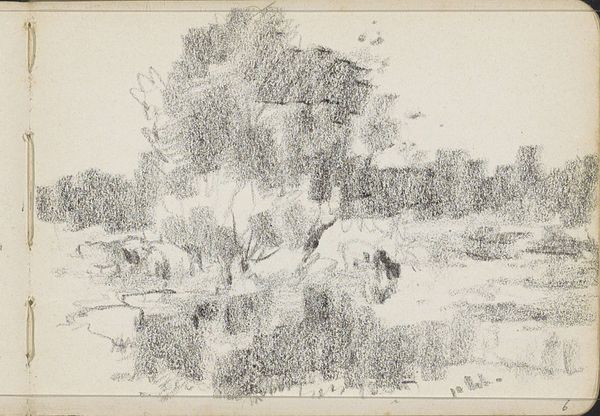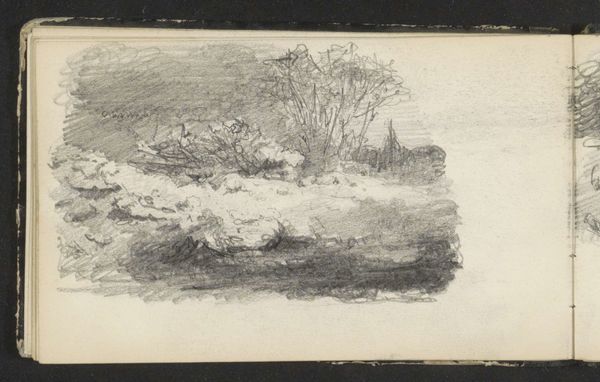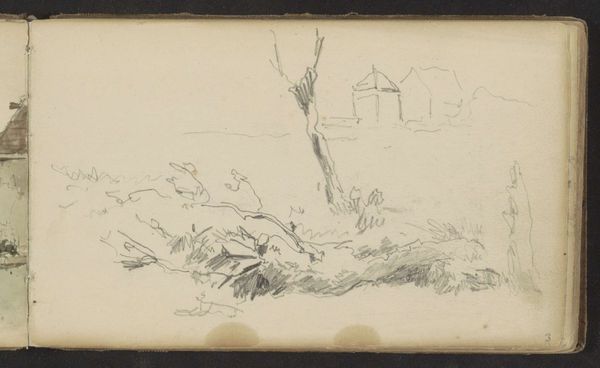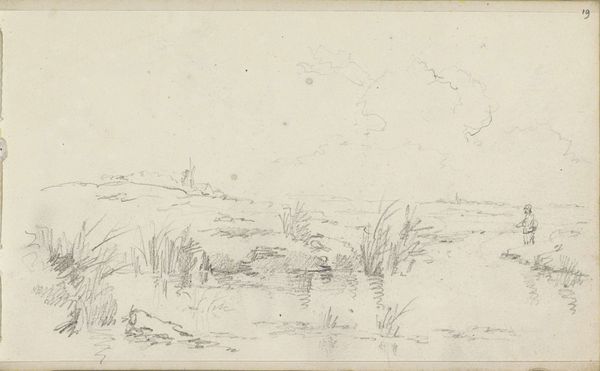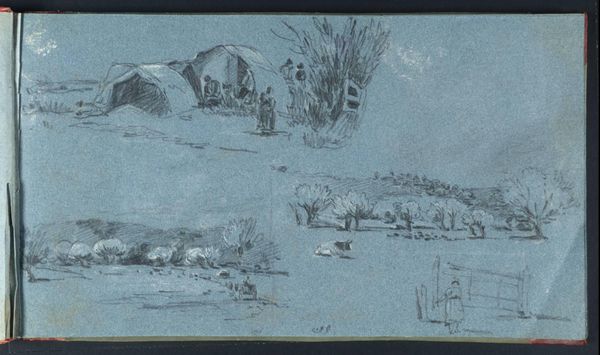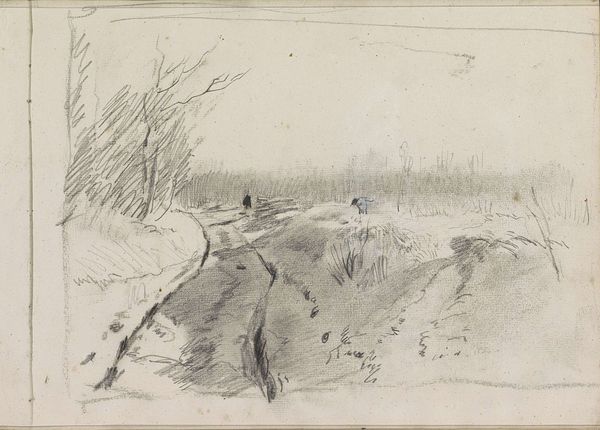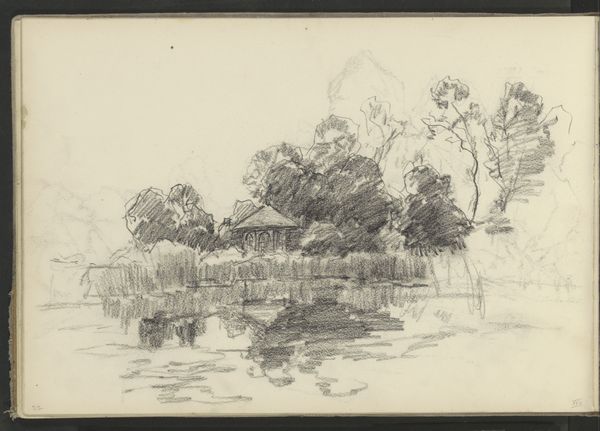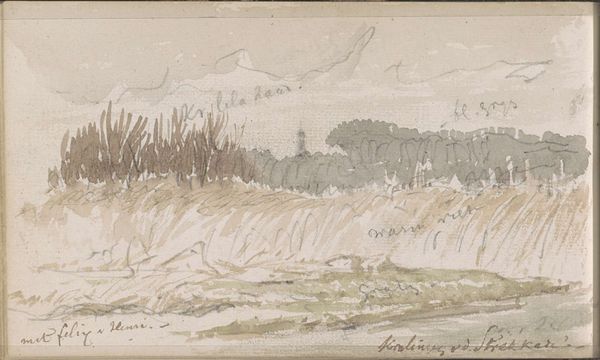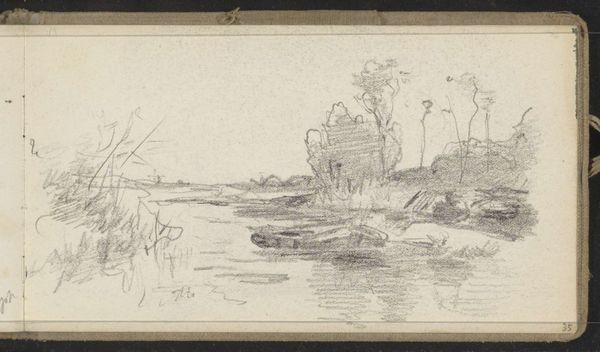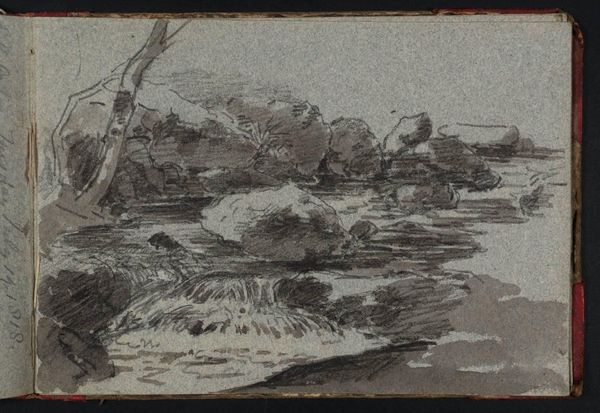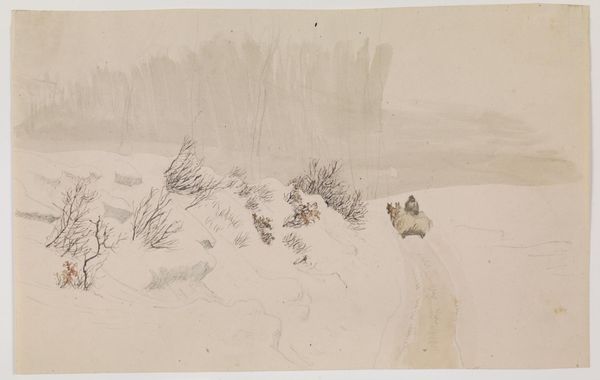
drawing, plein-air, watercolor, ink
#
drawing
#
ink drawing
#
ink painting
#
plein-air
#
landscape
#
watercolor
#
ink
#
watercolor
#
realism
Copyright: Rijks Museum: Open Domain
Curator: Let's discuss "Ducks on the Waterfront near Sneppenschrik," a piece created between 1864 and 1867 by Johannes Tavenraat. It’s currently housed here at the Rijksmuseum. Editor: The immediacy is striking. I'm drawn to the contrast – the fluidity of the watercolour against the precise, almost urgent, strokes of ink. It gives the scene a dynamic quality. Curator: Tavenraat was working during a period of significant societal shift. The rising middle class in the Netherlands was increasingly engaging with landscape painting, seeking an expression of national identity and belonging in the face of rapid industrialization. Watercolors like this offered a tangible connection to the land. Editor: Yes, and it speaks to the materiality as well. It is made with a minimal palette – the layered washes create a sense of depth and atmosphere that suggests the artist was really exploring the physical qualities of water. It's not just a representation, it's an interaction. Curator: The choice to depict such an unassuming subject as ducks can also be seen as a democratic one. Eschewing grand historical or mythological themes, Tavenraat focuses on the everyday lives of the creatures that inhabited the Dutch landscape. In a way, he gives voice to the non-human actors within a specific ecosystem. Editor: Absolutely. Think about the context. The materials are portable, relatively inexpensive—watercolor and ink lend themselves to open-air sketching. Did that accessibility democratize the creation and consumption of art at the time? This resonates today with DIY movements and renewed interest in craft and artisanal practices. Curator: Considering the political dimensions, the wetlands depicted were historically areas of contested territory, spaces of both productivity and marginality. Therefore, choosing that location brings attention to these questions. Editor: True. And when you zoom in and analyze it that way, it is not an ideal pastoral painting, because you can sense a potential for conflict between civilization and untamed wilderness and land usage. It gets you wondering: what exactly did this depiction do, and what exactly was it used for? Curator: Precisely! These drawings serve as primary sources in the study of 19th century ecological thought. It seems simple, but has so many interesting components. Editor: I agree; I originally thought it would be basic landscape art, but understanding the context and materiality added several layers of appreciation to my reading of Tavenraat's image.
Comments
No comments
Be the first to comment and join the conversation on the ultimate creative platform.
